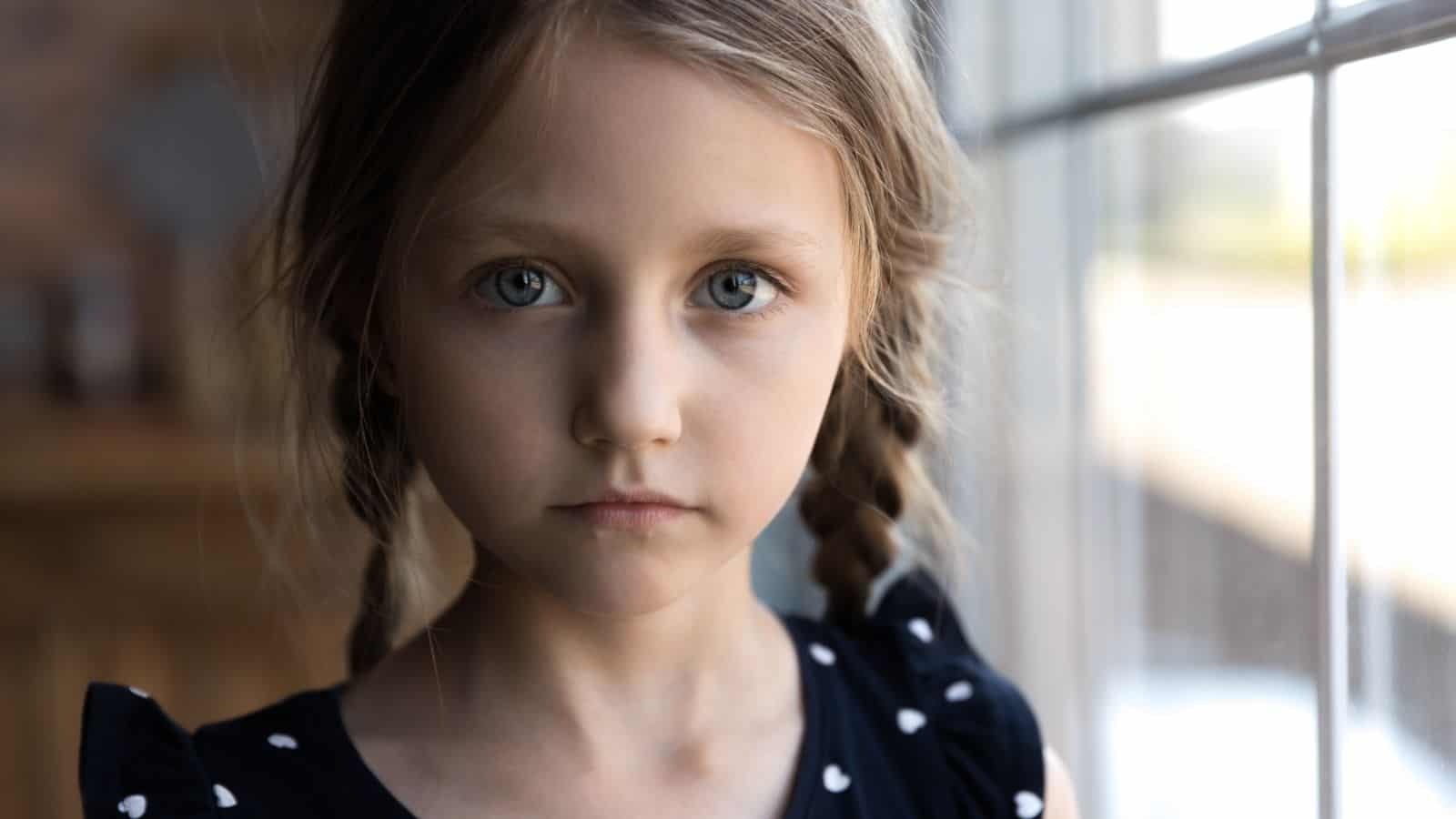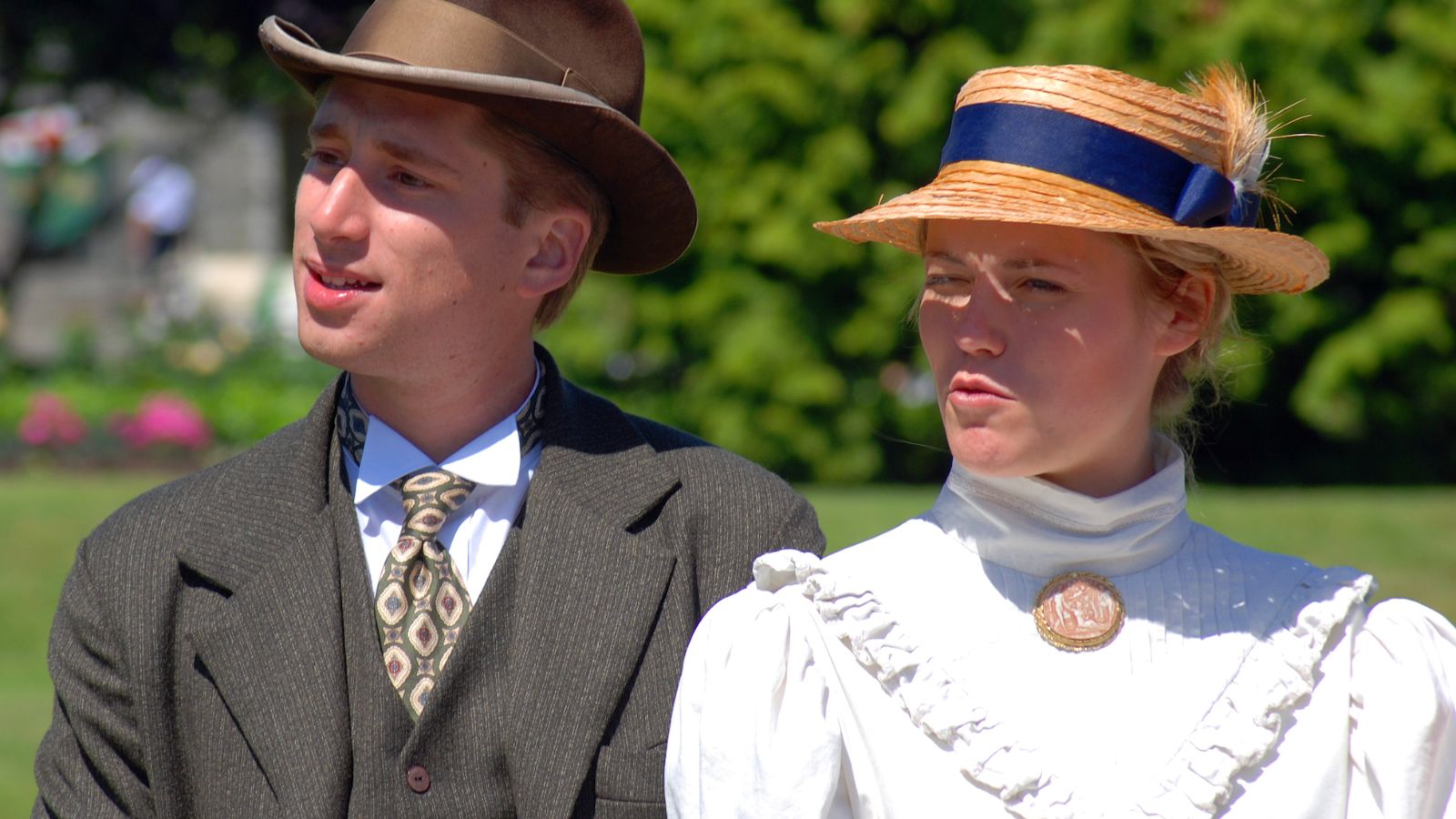We all know that our ancestors got up to some weird things in the past, but you might be surprised at just how weird they could be by today’s standards. From tapeworm diets to arsenic beauty products, this list covers 18 of the strangest things our predecessors did back in the day.
Using Leeches for Medical Treatment

According to the National Library of Medicine, “leeching” was a common practice in the Christian era. This strange form of treatment involved placing leeches on various parts of the body with the goal of balancing bodily fluids or treating other medical issues.
Sending Children Through the Mail

Did you know that it used to be legal to mail children through the postal system? In the beginning of the 20th century, kids would sometimes have stamps attached to their clothes so they could be sent off to see relatives, family friends, or others.
Mourning Jewelry Made from Hair

During the Victorian era, people often wore jewelry crafted from the hair of loved ones who had passed away. This was seen as a personal, sentimental way of remembering and honoring their friends or family members.
Public Bathhouses as Social Hubs

Many years ago, in ancient and medieval times, bathhouses were commonly seen as social hubs where people could go to socialize, relax, and even conduct business. While spas remain a popular form of rest and relaxation, communal bathing would seem like a much stranger practice today.
Bloodletting as a Cure-All

Until the late 19th century, people commonly believed that bloodletting was an effective treatment for a wide variety of ailments. According to Harvard University, it was thought that this practice would balance bodily “humors” and help one achieve a healthier state.
Carrying Nosegays to Mask Odors

Towns and cities of the past weren’t always the nicest places to be. In fact, they could be so smelly that it was common for people to carry around small bouquets of flowers called “nosegays” to counteract the stench.
Dueling to Resolve Disputes

While today we may resolve conflicts through discussions or legal action, until the 19th century, it was common for many people around the world to resolve disputes through dueling. Despite the practice’s often violent nature, this was viewed as a matter of honor between gentlemen.
Using Arsenic for Beauty

Unfortunately, people in the Victorian era did not know about arsenic’s toxic effects on human health. Blissfully unaware of the harm they were doing to themselves, many women would use small amounts of arsenic on their skin to achieve a pale complexion.
Wearing Powdered Wigs

Powdered wigs were considered fashionable among elite Europeans during the 17th and 18th centuries. These headpieces were often used to symbolize high social status and disguise hair loss resulting from syphilis or other health issues.
Foot Binding in China

The Queen Mary University of London states that foot binding was a common practice in China for over 1,000 years and only started going out of fashion in the early 20th century. Young girls would have their feet tightly bound to achieve a smaller foot size, which was considered an attractive quality in the past. Today, the practice is widely seen as cruel and damaging to one’s physical health.
Engaging in Seances and Spiritism

During the 19th and early 20th centuries, seances were viewed as a common and effective way of communicating with those who had passed away. While some people still participate in similar practices today, they are nowhere near as popular as they once were.
Wearing Full Mourning Attire for Extended Periods

Most of us are on board with the idea of dressing in black clothing when attending funerals today. However, in the Victorian era, widows were sometimes required to wear mourning attire for up to two whole years after their partner’s passing.
Using Coca-Cola as a Medicinal Tonic

Not so long ago, Coca-Cola was marketed as a medicinal tonic capable of curing ailments such as headaches, impotence, and physical exhaustion. What’s more, early iterations of the drink actually contained cocaine. Nowadays, we’re better acquainted with the negative impact of consuming too much soda and caffeine.
Collecting Mummies for Parties

During the 19th century, some people would collect mummies to unwrap during parties as a form of entertainment. Obviously, as a deeply disrespectful and culturally insensitive practice, this would be completely unthinkable today.
Engaging in Ugly Laws

Another far-from-pretty aspect of our ancestors’ lives was their engagement in “ugly laws.” These late 19th and early 20th-century laws could prevent people who had visible disabilities or abnormalities from appearing in public.
Manual Human Alarm Clocks

Back before alarm clocks were common household tools, people called “knocker-ups” were employed to knock on people’s doors or windows to wake them up instead. They would often use long poles or pea shooters on doors and windows when they couldn’t knock on the door by hand.
Consuming Tapeworms for Weight Loss

Here’s another horrifying fact for you. In the Victorian era, women would sometimes ingest tapeworms in the hopes of losing weight more easily. According to Atlas Obscura, they would take a pill containing a tapeworm egg, which would then hatch and, in theory, allow the individual to safely eat more without gaining as much weight.
Housing Ice in Ice Boxes

How did our ancestors keep food cool before the invention of electric fridges? Using giant ice boxes, of course! These makeshift fridges would require frequent deliveries of large amounts of ice to keep this cooling method effective, making it an inconvenient and expensive way of storing food.
Read More: Why People Aren’t Religious Anymore: 15 Simple Reasons

As society evolves, so does our approach to spirituality. This article looks at the subtle yet profound shift from traditional religious adherence to a more personal, evidence-based belief system.
Why People Aren’t Religious Anymore: 15 Simple Reasons
17 American Attractions That Not Even Americans Want to Visit

The United States of America—land of the free, home of the brave, and the location of some of the most ‘unique’ tourist attractions you’ll ever lay eyes on.
Get ready to chuckle, scratch your head, and maybe even facepalm as we look at 17 American attractions that not even Americans think are worth visiting.
17 American Attractions That Not Even Americans Want to Visit
17 Fairy Tales That Are Now Considered Racist

While fairy tales weave magical narratives that span generations, many emerge from historical and cultural contexts tinged with biases. Hiding in many of these tales, racial undertones can be found. Let’s look at 17 fairy tales that have deeper implications.
17 Fairy Tales That Are Now Considered Racist
18 Common Traits Found in Adults Who Had Unhappy Childhoods

Being a parent is a hard job, so even those who are truly trying their best will often miss the mark on creating the best environment for their children. Unfortunately, this means that many of us grow up with far-from-perfect childhoods that affect us into adulthood. Here are 18 common traits found in adults who had unhappy childhoods.
18 Common Traits Found in Adults Who Had Unhappy Childhoods
18 Things Old People Just Can’t Get On Board with Today

Over the past few decades, society has evolved, and with it, so have a few things that older generations find it uncomfortable to get the hang of. While younger generations are easily able to adapt to these changes, some of which are drastic, others may be struggling slightly. Here are 18 things the elderly may have difficulty learning.

